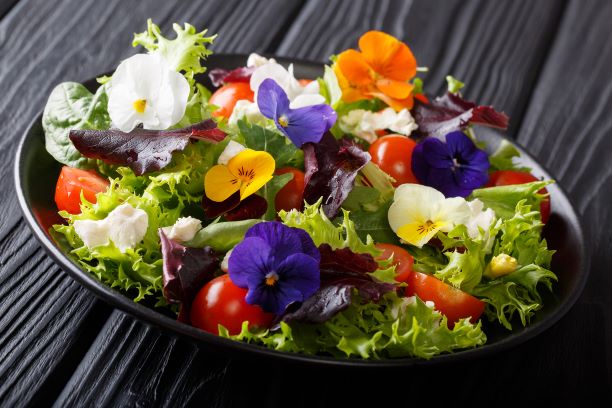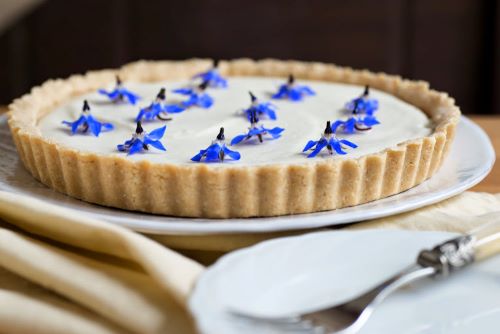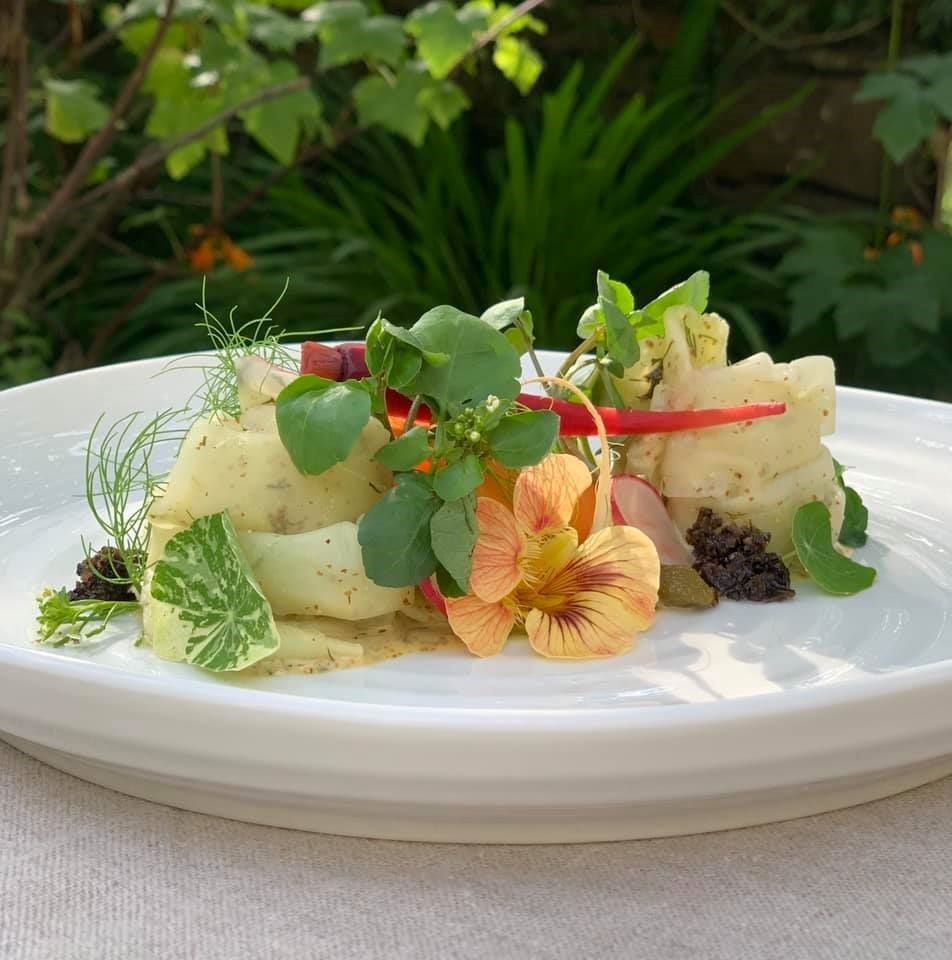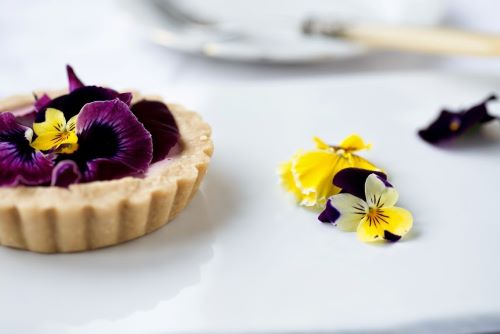Top 5 edible flowers all rounders
My garden is currently teaming with edible flowers. I use them a lot in the raw food at the Deliciously Raw Culinary School. I love seeing the faces of people when they discover that not only can they eat some flowers, but there are so many things we can do with them such as fermenting and dehydrating - and they taste delicious.
So, when Becky from Sow Much More asked me to contribute to her feature on edible flowers, I was only too pleased.
Becky is a fantastic grower of all things and has a very impressive and productive vegetable patch.
We have chosen our top 5 edible flowers together. Becky has chosen based on their value as garden plants and what they will add to a vegetable patch. I’ve chosen for their use in your kitchen including notes on what they taste like and how they can be used in your food.
So, these are 5 edible flowers that really do offer ‘so much more’ (see what I did there?)
The five we have chosen are
Borage
Calendula
Nasturtiums
Verbena
Violas
You can find out more about how to use them below.
Borage
Borage represents good value since the leaves, stems and flowers of borage can be eaten, all of which have a cucumber-like flavour. Chop the stems for a salad but you’ll need to peel the stems first since they are quite prickly. The leaves can be juiced. Borage flowers can be white, pink or blue.
The flowers are quite delicate so don’t respond well to heat. Nor do they like to be sitting around for a long time and can start to look tired quite quickly. Add borage flowers to ice cubes or jellies where you can preserve their good looks. The flowers make excellent cake decorations if you add them at the last minute. They work particularly well on a lemon tart or cheesecake or will pretty-up a fruit salad, being a wonderful pairing for raspberries, strawberries, blackberries and watermelon. They work equally well with savoury dishes, try stirring the flowers into yoghurt with a few chopped mint leaves for a colourful raita.
For something different, enjoy the stems, leaves and flowers to flavour your gin and tonic or jug of Pimms instead of your usual slices of cucumber.
Here I have added borage to a lemon tart. They add a vibrant pop of colour, plus a lovely light refreshing bite.
Raw plant-based lemon and borage tart. Photography by my friend Dawn Langley. From a forthcoming online programme about working with Edible Flowers.
Calendula
Calendula petals are bright orange or yellow with a tangy slightly peppery citrus lightly nutmeg-like flavour. Called the poor man’s saffron, calendula petals work well in savoury and sweet dishes, working exceptionally well in Middle Eastern and Persian recipes.
Whizz them into a pesto to make a colourful splash with your pasta, stir them into risottos or mashed potato cakes, press the petals into samosa pastry or bread dough before baking or infuse into milks and whizz into cream sauces and soups. The petals can be pickled or sprinkled on fruit leathers before dehydrating or stirred into cookie dough for a pop of colour before baking or dehydrating.
Calendula can be so striking. It really is worth reaching for them instead of the saffron.
Calendula and nasturtium pesto with raw noodles. Photography: Dawn Langley. From a forthcoming online programme about working with Edible Flowers.
Calendula, or ‘poor man’s saffron’
Nasturtiums
Nasturtium flowers can vary in colour from yellow to dark red although there is not much difference in flavour. You can eat all the nasturtium except the seeds. The leaves, seed heads and flowers have a peppery bite, not dissimilar to rocket. Add the leaves to a salad, a stir fry or as part of a steamed green mix. The flowers are beautiful in salads and despite being smaller than courgette flowers, can be stuffed and deep-fried in fritters. Nasturtium flowers can be submerged in apple cider vinegar to create nasturtium vinegar for a taste of summer in your vinaigrette all year long. The seed pods can be pickled and are called poor man’s capers. Nasturtiums are delicious paired with lemon, ginger, cabbage, celery and seaweed. Try adding the flowers and leaves to a pizza for a summery twist.
Roots, shoots and leaves featuring nasturtiums. From my Level Three Professional Raw Chef Mastery Certification.
Verbena
There are many types of verbena and some can be quite bitter. The queen of the verbenas for culinary use is undoubtedly lemon verbena. It has a robust sharp citrus flavour, a lot like lemongrass with a slightly milder white-lavender coloured flower. Both the leaves and the flowers are edible. A little goes along way with lemon verbena so use sparingly as it can quickly overpower other ingredients.
Like lemongrass, lemon verbena can be used in sweet or savoury dishes. Muddle into your tonic water, infuse into a tea or simple syrup. Turn into a sorbet or infuse into cream or custard. Chop the leaves and mix a little with mint and coriander leaves for Thai and Indonesian inspired dishes. Lemongrass is a good partnership with raspberries, strawberries, rhubarb and peaches.
Lemon verbena flowers and leaves
Viola
Violas are beautiful dainty blooms, however if you can taste anything at all it is likely to be a faint lemony flavour making them quite a neutral flower to use in both sweet and savoury dishes.
Use as cake and dessert decorations – fresh or candied, or to pretty-up anything plain looking dishes such as chia pudding, rice pudding or avocado toast or as a garnish for a smoothie. You can add them to salads and clear soups or freeze them into ice cubes and ice lollies. They can add another level of stunning to Vietnamese summer rolls if layered underneath the transparent wrap.
Here’s a raw vegan viola tart I made to celebrate the opening of Chelsea Flower Show. Viola plants are still going strong at the end of August and beyond so really do earn their place in the garden.
Raw viola and strawberry tart. Photography: Dawn Langley
To find out more about what these plants can offer your garden and your vegetable patch, have a read of Becky’ blog and watch her you tube video below.
Top 5 Edible Flowers | Sow Much More - YouTube







